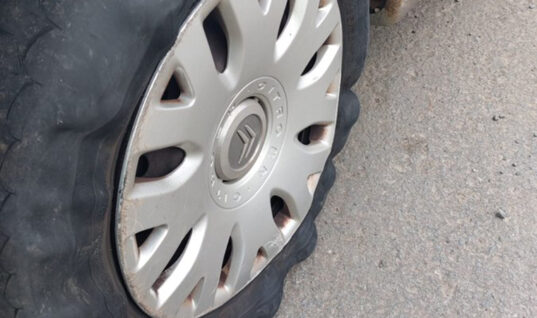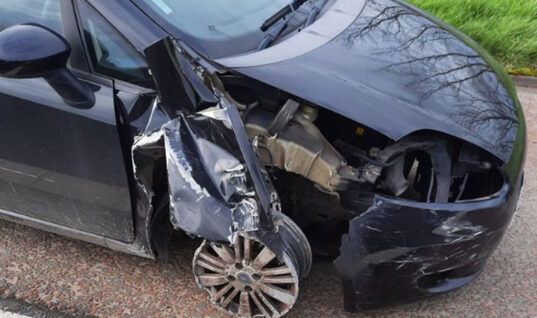Technology and enhanced engineering has most certainly improved the quality and reliability of current vehicles.

However, as cars become more complex, driven mainly by legislation, regulation and consumer expectations, when things do go wrong, it can be much harder to find the answers to potential operating issues.
This can present various hindrances to any prospective diagnostic routine, leading to frustration on behalf of the attending technician.
Physical clues of failure?
As vehicle systems develop, especially in the field of electrics and electronics, many of the physical indications of component failure have disappeared.
What I mean by that is, spurious symptoms can present drive-ability/operating issues in systems without any actual damage occurring.
It may be just “a ghost in the machine”.
Electrics and electronics are driven by logic, contained in the programs and software created to control vehicle systems.
The problem with logic is it can be very rigid in its application.
Tolerances will be included to allow for variation and wear, but in the real world, there is “no one size fits all”.
This means that when designing control programs, not all eventualities can be planned for.
There comes a point in any research and development when the product must go on sale; this then leaves the consumer as the “test pilot”, conducting real world analysis, which can lead to disappointment and irritation when things go wrong.
Commonplace problems that were not resolved during the design process, can often be quickly rectified through software updates, but less common issues can be hard to identify or may not be financially viable to fix.
The technician is now faced with a software issue, and can end up chasing their tails, with no hope of actually solving the problem or root cause.
The only option left in this instance is to cure the symptom, which is often the customer complaint and which can then lead to compromising of other systems or operations.
Vehicle software updates at independent garages
As anyone who has a computerised electronic device knows, regular software updates are produced to overcome bugs, glitches and maintain security; this is the equivalent of mechanical system servicing.
Unlike most personalised electronic devices, many cars are not yet connected to the internet, meaning that software updates must be manually installed by a technician using dedicated equipment.
This is fine when vehicle is being maintained within a manufacturer network, but what happens when the vehicle reaches the independent aftermarket?
Does the organisation, and or repairing technician, have access to information and the necessary equipment in order to find out if the car is running on the most up-to-date software operating system?
If physical or mechanical repairs have been conducted in the meantime, how will these conflict with any changes in the operating software?
Are there any potential problems caused by a lack of maintenance, covered up by adaptive strategy, that would require sorting once the update has been completed?
Avoid lazy diagnosis
As a member of several internet forums and diagnostic network groups, I often see requests for help, sometimes before the vehicle has even arrived at a workshop or had an initial inspection.
In my opinion, this is lazy diagnosis as someone is looking for the “Silver Bullet“ repair without undertaking any diagnostic process.
Unless you arm yourself with any facts, how can you know if you found a cure?
Customer questioning
A good diagnostic routine should always start with careful questioning of the customer, ensuring that the background history to any faults is fully investigated, and include the key questions of “how, what, why, when and where”.
It should then move on to careful questioning of the vehicle – interrogation using a vehicle communication interface.
Many technicians jump straight in for diagnostic trouble codes, and although this is okay, it is worthwhile remembering to check IM readiness monitors to ensure that the vehicle is ready to be diagnosed.
Global diagnostic scan
Good practice shows a global scan is always advisable, as issues in unrelated but networked systems can have an affect on the overall operation, and must be rectified first in order to ensure that they are not influencing functionality, and causing symptoms the customer is complaining of.
FreezeFrame data, if available, is also a good source of diagnostic information, as it can often give an approximation of the operating circumstances when the most recent code was stored; allowing the technician to simulate conditions during road test etc.
But before any codes or adaptions are reset, if possible, you should make sure that the vehicle is running the most up-to-date software.
Social media network support
As previously stated, access to this sort of information can be hard to come by, but there are communities of like-minded technicians willing to offer help and support.
This is where the true power of social media networks, support groups and internet forums become a very effective diagnostic tool.
Thanks to the generosity of many professional members, the sharing of information in an often accessible and rapid format can be at your fingertips.
Instead of asking the crystal ball question of what might be wrong before you’ve even seen the vehicle, perhaps we should be asking if there are any updates available or what version of software we are expecting to find.
This vital step should become an embedded part of any good systematic routine, and may also help with premature hair loss.
This article has been extracted from a new and upcoming book by Graham Stoakes.
Graham Stoakes
With a long history working in an independent garage, Graham now teaches motor vehicle technology at Chichester College.
He’s a renowned author too, with ten books and three CD ROMS to his name so far, covering a range of vehicle technology topics from levels one to four.
To find out more about Graham Stoakes and his automotive books, visit his website.
Share your comments below.








Home Page › Forums › Opinion: Checking for software updates needn’t be as difficult as you might think